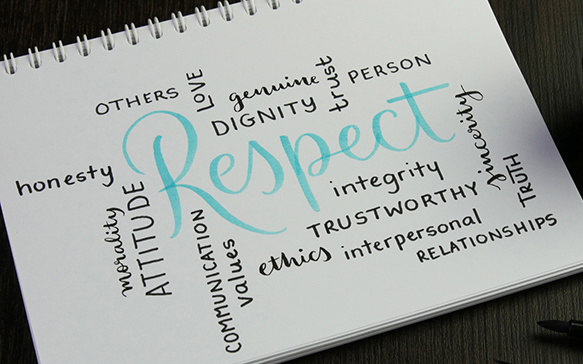
Who Is Emily Post and Why Should We Care?
Navigating Sensitive Topics With Text: Tips For Doing It Right
The landscape of how we communicate with each other—and, more specifically, to respond to sensitive topics—has drastically shifted over the years. For those of us who want to say just the right thing to someone who needs support, there used to be guidelines, a generally accepted way to express our thoughts in a way that wouldn’t upset the party on the receiving end. It’s easy to get tongue-tied in our confusion about what to say, how to say it, and when.
Emily Post (yes, she was a real person) was the expert in all things etiquette when people had no choice but to show up in person or via a note—no screen to hide behind. Post’s first edition of Etiquette in Society, in Business, in Politics, and at Home was published in 1922 (the Centennial edition was published in 2022).
Joan Didion, who wrote the 2005 book The Year of Magical Thinking to help her through the death of her husband, relied on Emily Post the most after consulting many experts on death and dying. It seems Mrs. Post had the most practical advice about grief; most likely, she suspected, people confronted death more immediately during a time when many died at home.
“There is something arresting about the matter-of-fact wisdom here, the instinctive understanding…” writes Didion. “As I read it, I remember how cold I had been in New York Hospital on the night John died…Mrs. Post would have understood that. She wrote in a world where mourning was still recognized, allowed, not hidden from view.”
Technology Changes Everything
Since the first book on Etiquette, not only has the world changed, but so have we. Slowly, over the decades, then at an increasingly fast pace. Technology has progressed so quickly that it can be difficult for some of us to get our minds around what it can do, and how it replaces conventional ways of communicating. Or, especially for those of us who didn’t grow up with it, why would we even want it to?
I remember being told in a college journalism course that someday, we wouldn’t be reading newspapers or publications in print; it would be over the computer. That was hard to believe then before the internet even came into being. Not to mention mobile phones. Leapfrog ahead a few decades and AI is trending and controversial. You don’t have to know what to say or even how to write—type a question into a box and a response will be generated for you—no thought required.
To be sure, AI has remarkable implications for good. What can’t be autogenerated, however, is the authentic emotion behind what we write, especially when we express our support to a friend or family member. And this is where old-fashioned values come into play at a time when society is rebelling against them.
It’s Really About Manners
The term “etiquette” can sometimes get a bad rap—something that only the upper crust does—like how to properly hold a teacup. “(The name) ‘Emily Post still conjures up images of persnickety debutantes in twinsets and pearls,” writes Laura Miller in her article in Slate magazine “To the Manners Born.”
But that’s not what etiquette is: in its simplest form, etiquette embodies three qualities: consideration, respect, and honesty. The Emily Post Institute is now headed by Emily’s great-great-grandchildren, cousins Lizzie Post and Daniel Post Senning, who have worked to adapt their great-great-grandmother’s principles to the changing world of communication.

“Etiquette fills the gap for us when we are at a loss when our familiar day-to-day ways offer no help,” writes Ted Gioa in his article What I Learned from Emily Post, “especially in our most vulnerable moments. The ‘rules of the game’ are like the steps of a ritual.” And sometimes, we need them.
Texting a Condolence is OK
Remember the three founding principles of etiquette? Consideration, respect, and honesty. Those haven’t changed. The other thing that hasn’t changed is that you can say what you truly feel, according to www.emilypost.com. The method doesn’t matter as much.
Texting someone a message of comfort, especially during a time of grief, is now a thoughtful and acceptable way to offer support. If done well, texting can help people deal with traumatic events. “Studies have shown that people who text and reach out to others experience less pain,” says Tchiki Davis, who holds a Ph.D. in Psychology. “It can be used to cope and just kind of deal with challenging situations.”
Texting Allows For:
- Accessibility and immediacy: Text messages provide an immediate way to reach out to someone who is grieving. In contrast, traditional etiquette rules might have required sending a formal letter or card, which could take days to arrive. During times of mourning, the need for immediate emotional support is crucial.
- Personal connection: Texting allows for a more personal connection. What was once considered to be less than personal, texting is now seen as a way to express your genuine emotions in real time, making your message feel more heartfelt and authentic.
- Discretion: In some cases, grieving individuals may prefer the privacy of a text message over in-person or phone conversations. Texting allows them to process their emotions and respond at their own pace.
- Respect for digital communication norms: Today, people appreciate authentic gestures of kindness and empathy, regardless of the medium. Texting is now a widely accepted and common form of communication. It respects the preferences and comfort levels of the grieving individual, who may be more accustomed to digital interactions.
- Convenience and flexibility: Texting is convenient for both the sender and the recipient. It can be sent and received anytime, allowing the grieving person to respond when they are ready. This flexibility aligns with the unpredictability of grief.
- Inclusivity: Texting is inclusive of diverse communication preferences. It accommodates individuals who may have social anxiety, struggle with spoken communication during grief, or have physical limitations that affect their ability to send or receive traditional written letters.
Texting & Etiquette Can Co-Exist
While texting offers many advantages, it’s important to use sensitivity and judgment when deciding whether it’s appropriate in each situation. Some people may still prefer handwritten letters or other forms of communication. The key is to consider the grieving person’s preferences, the nature of your relationship, and the context of their grief.
Etiquette and Emily Post have evolved, but the principles of why etiquette came into being haven’t changed, just the methods. Providing comfort and support via texting is a valuable and meaningful way of expressing your condolences and care during a difficult time. Though not in person or handwritten, your effort and thoughtfulness in sending a text can still impact the recipient.
“Whenever two people come together and their behavior affects one another, you have etiquette . . . it is not some rigid code of manners; it’s simply how persons’ lives touch one another.” —Emily Post
by Carrie Phelps-Campbell, Sunset Contributor




Post a comment